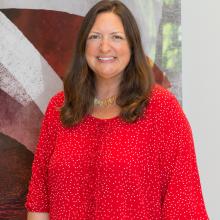Designing & Teaching an Emergency Preparedness and Crisis Management Course in the Midst of a National Emergency
Concurrent Session 3
Brief Abstract
Being prepared for emergencies is important as you can never be too prepared. Individuals in higher education know that to be true. Unfortunately, a gap exists in training professionals about emergency preparedness and crisis management within student affairs and higher education. NC State created a course to bridge the gap.
Presenters


Extended Abstract
Before COVID even existed, three individuals from NC State created and taught a 1-credit hour course in Fall 2019 to prepare students and staff to understand and navigate crises, disasters, and situations that require a special skill set to increase overall preparedness. Student affairs practitioners are less prepared to handle such situations since there are limited training opportunities in the classroom. After this 1-credit course pilot, the PIs noticed they needed to deepen the topics covered, broaden their reach to students by offering the course in a hybrid/blended format via online learning, and ensure higher education professionals were thoroughly prepared and aware of any variety of situation they may face in both their personal and professional lives.
Fast forward approximately two years…everyone is in the midst of COVID-19 and emergency preparedness is more important than ever before, especially for individuals in higher education who were not prepared to shut down entire college campuses for extended periods of time. Dr. Smith submitted a blended learning DELTA Grant in May 2020 with these same three individuals and was awarded the grant in August 2020. Knowing that they wanted to deepen the topics covered previously, they set out to restructure the original course by increasing it from a 1-credit hour to a 3-credit hour course that incorporated blended, hybrid, synchronous, and asynchronous components to deliver course content in a flexible manner. In order to complete this successfully though, we had to meet the following challenges: sequence the course content appropriately and logically; provide course material in a variety of methods as there was a lot of information to teach and present; and establish a way to present the content in Moodle since the course wasn’t previously built within Moodle.
Several project goals were established within the first several meetings that helped the instructional designer/project manager establish the project deliverables and overall project scope. From there we built out our project timeline, identified the main topics the PIs wanted to cover in the course, and worked to redesign what had been used previously while creating new material that we determined would be needed. This course is relevant to all educational, community, and corporate sectors. Students taking the course benefit from learning and applying the emergency preparedness content to their personal and professional lives. The impact of this type of course is truly significant as it has far-reaching impacts with ripple effects as they share material they learn with family, friends, colleagues, and their community.
The Emergency Preparedness and Crisis Management course was initially developed and offered as a pilot course in 2019 to mitigate the lack of preparedness in higher education settings. After teaching the pilot, the need to develop the course as a 3-credit offering to graduate students seeking to learn personal and professional preparedness skills was clear. In addition, the pandemic of 2020 began, which certainly magnified the importance of our course. The course utilized a variety of technologies to engage students and enhance their learning experience. Three primary technologies were used throughout the course delivery, which included the use of podcasts, Playposit, and Zoom. The course was offered as a hybrid model of instruction and co-taught by two instructors. One instructor primarily remained in the classroom (i.e., on-campus) while the other instructor taught synchronously from Zoom. Students selected their preferred method of delivery based on their own comfort level and current situation. Based on student feedback, students appeared to appreciate the opportunity to listen to experts in the field via podcasts throughout the 3-credit course. The ease and flexibility of listening “on the go” at their convenience, during travel time, etc. was valued during the challenging semester. The use of Playposit afforded students the opportunity to review material covered during the week along with brief knowledge check-ins throughout the material. Teaching the course in the hybrid format for the first time as a 3-credit course during the pandemic offered multiple opportunities for the instructors to draw from “real-life” experiences that were occurring in actual real-time. The variety of technologies used throughout the course was intentional so students could engage with the content, each other, and the instructors in the best way that made sense to them, particularly given our current context.
Session Learning Objectives:
At the end of this session, participants will be able to:
-
Identify instructional challenges when converting a course from 1-credit hour to 3-credit hours
-
Determine their level of personal preparedness
-
Recall takeaways from project team members
Audience Engagement Activities
-
Identify items needed in case of emergency
-
Establish level of preparedness by completing a personal preparedness activity
-
Analyze risks when preparing for a disaster through a group activity


